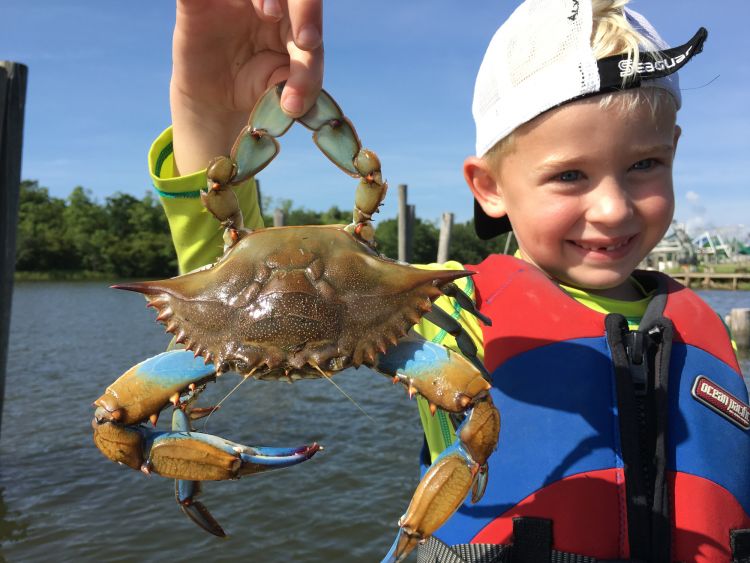
Recreational crabbing outstanding right now across the coast
It’s difficult to think of any savory dish that isn’t made more elegant and profoundly more delicious by the addition of one of two ingredients: bacon or crabmeat. I can’t tell you where to get a great deal on the former, but I can definitely clue you in on how to load up on the latter.
Crabbing is in full swing across the Louisiana coast, and it’s downright silly in certain areas, like the lower Barataria Basin.
It’s an activity that consumes many of my summertime hours because it’s thoroughly enjoyable, and the culinary payoffs exceed just about any other outdoor venture.
Blue crabs have quite a range, extending from Nova Scotia, down the Atlantic Coast, through the Gulf of Mexico and the Caribbean Sea to Venezuela and even down the Brazilian Coast all the way to northern Argentina, according to Jerald Horst, author of The Louisiana Seafood Bible: Crabs.
More specifically, here in Louisiana, blue crabs range from the pure fresh waters of the Atchafalaya Basin and western reaches of Lake Maurepas out to the saltiest barrier islands and even around platforms in the open Gulf of Mexico.
My family, friends and I do most of our recreational crabbing somewhere in between, mining the brackish waters that support more males than salt-loving females.
Inexperienced crabbers often assume there’s not a whole lot of art or skill involved in attracting the tasty crustaceans. You just bait up a net, throw it out and they’ll find you.
In reality, consistently successful crabbing takes as much forethought and preparation as successful fishing.
I’ve been crabbing recreationally all my life, and have had the good fortune to learn from some of the best. And really, the best teacher has been trial-and-error. Following is what I’ve learned. Hopefully you can use it to fill a hamper soon.
1. Go early. This is more important in the summertime than it is in the fall. Crabs are most active when water temperatures are at their coolest, from dawn until about 9 a.m. If you sleep in, you’ll be frying up your spare chicken necks for dinner.
2. Put out test strings. Unless I’m supremely confident in one particular area, I’ll put out test strings of three or four nets in various areas to see where the crabs are holding. When I find the mother lode, I’ll bomb that area.
3. Work ledges adjacent to deep water. My favorite crabbing depth is about 10 feet, but I want deeper water close by. That doesn’t mean I don’t test shallower waters, however. On my most recent trip, I found the largest concentration of crabs in 5-foot depths. That’s unusual, but I certainly wasn’t complaining. I bombed that area, and quickly caught 120 keepers.
4. Use fresh chicken. Crabs eat dead things for a living, so you wouldn’t think they’d be particularly picky, but I’ve found over the years that fresh chicken works far better than chicken that’s been frozen. Some days, it doesn’t matter, but other days, it really does.
5. Use two dozen to three dozen nets, and run them constantly. Some inexperienced crabbers will put out their nets, and let them sit while they fish for a while. This is crazy. If you’re in an area with a good crab population, you’ll return to baitless nets or stripped chicken bones. If you want to fish, do it after you’re done crabbing.
6. Run your boat into the current. Doing this will put you over the net while it’s being picked up. Going with the current will result in nets that frequently flip over, costing you your haul.
7. Take kids. Crabbing produces a ton of action, so kids really don’t have time to get bored. Also, there’s a certain danger aspect that kids enjoy. Crabs are mean, and they can hurt you, so kids naturally think they’re cool. Just make sure to provide the youngsters with tongs and make sure they’re aware of how to properly hold a crab.
8. Ice your crabs. As long as they’re kept cool and well-ventilated, crabs will live for several hours out of water. Pull the drain plug of your cooler, and keep ice on the crabs until you’re ready to boil them. There’s an additional benefit: Crabs that have been iced won’t eject their claws when they meet the boiling water.
9. Go now. The months of August, September and October are the absolute best for crabbing along the Louisiana coast. Don’t let the opportunity pass you by.

